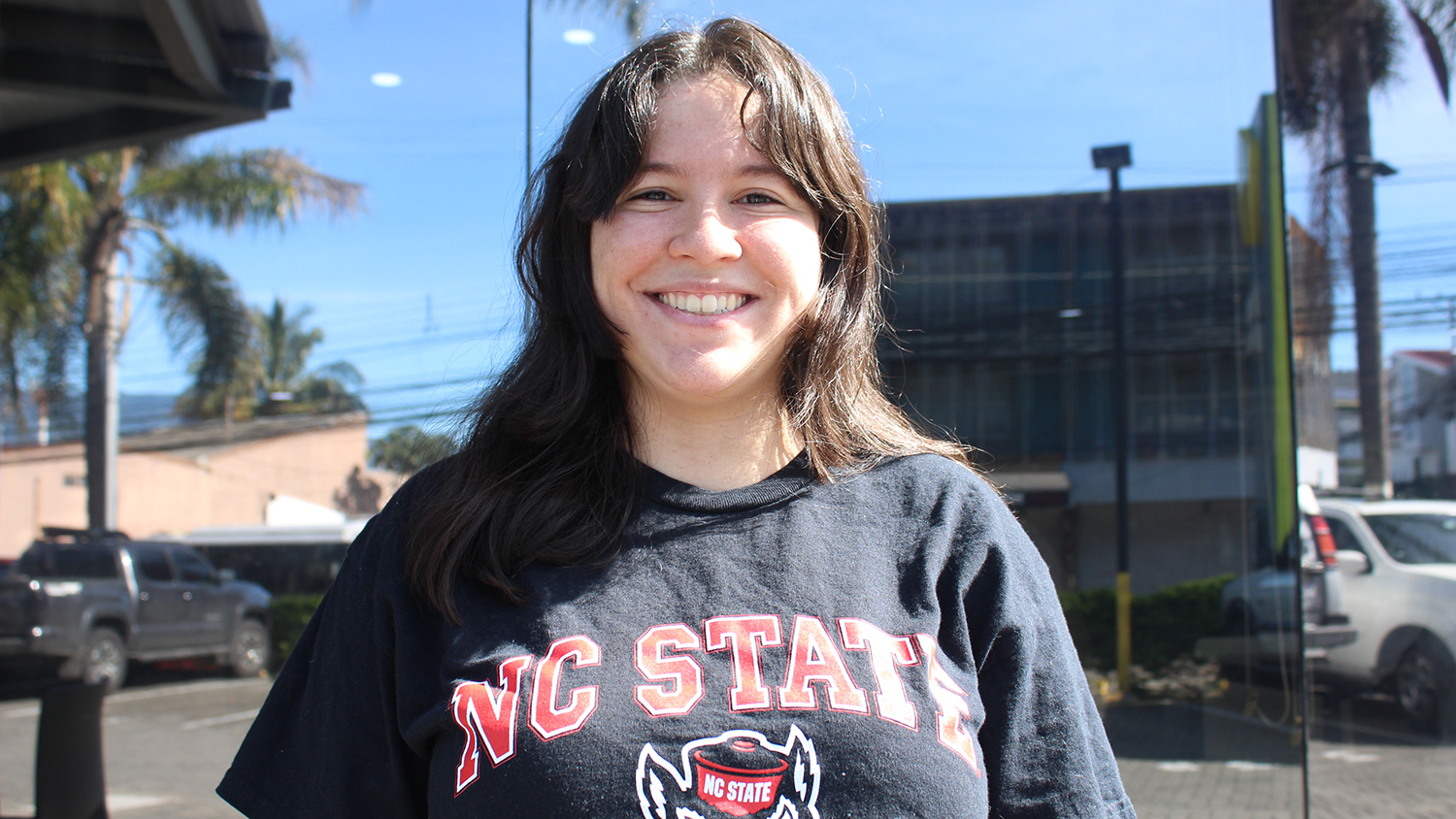Unlocking Heirloom Corn’s Untapped Potential
To protect the future of America’s biggest crop, NC State researchers are cataloging traits in almost a thousand types of corn that were nearly lost to history.

Under a blazing late-summer sun at the Central Crops Research Station in Clayton, North Carolina, Jordan Cummings strolls through stalks of eye-high corn nearly ready for harvest.
They look ordinary, but as the NC State University graduate student peels back their husks she uncovers a rainbow of colors — jewel-like kernels in yellows, reds, purples, pinks and blues. They come with equally colorful names, such as Potawatomi White, Bloody Butcher and Georgia Blue.
“My personal favorite population is called Pinky Pop, which is a pink popcorn,” says Cummings, who is working on a Ph.D. in crop science with N.C. Plant Sciences Initiative affiliates Joe Gage, of NC State’s Department of Crop and Soil Sciences, and Jim Holland, of the U.S. Department of Agriculture’s Agricultural Research Service.
The plants that Cummings is growing in Clayton are more than just pretty: They’re heirloom populations that have been selected for their flavor, hardiness or other traits and saved and passed down from generation to generation.
Cummings sees them as a safeguard against future challenges to a crop that’s key to U.S. food and fuel supplies.
Corn is America’s largest crop, with some 90 million acres planted each year. That’s about 70 million football fields of corn.
It’s there, indirectly, in our corn-fed beef, pork and chicken. It’s mixed into the gasoline sold at U.S. pumps, in the form of ethanol. It’s in the corn syrup that sweetens our candy and soft drinks, the corn starch that thickens our soups and sauces and the corn oil found in fried snacks and margarine.
Some estimates suggest that 75% of packaged supermarket items contain corn in some shape or form.
Genetic Diversity at Risk

Before modern hybrid corn came to dominate the market, indigenous peoples and settlers cultivated corn populations by selecting the best cobs from the crop and saving the seeds to plant the following year.
Generations of families passed down seeds this way, season after season. But by the early 1900s, heirloom types could no longer compete in yield with commercial corn, and farmers stopped growing them.
To keep them from disappearing, researchers at the USDA and elsewhere set off on a mission to collect heirloom populations once grown across the nation.
Today, the collection includes some 990 populations of heirloom corn, maintained in climate-controlled storage for further study. But unless they’re periodically replanted, the lines will die, along with whatever genetic diversity they contain.
Untapped Potential

That’s where Cummings’ work comes in. She is part of an effort, funded by the USDA, to figure out what genetic potential lurks within these heirloom lines and make it available “so small farmers, small breeders or even industry can use it as a genetic resource for making maize more diverse again.”
Maintaining genetic diversity is important because “we just don’t really know everything that we’re going to be facing in the future,” Cummings says.
One of the heirloom populations could have traits that allow farmers to grow corn that can fend off the next plant disease or pest outbreak or withstand droughts, floods or other threats that pop up in the years to come.
So, for the past two years, Cummings has been working with collaborators at the University of Missouri to grow each of the populations in plots in Clayton and at another site in Missouri to see how they perform. They’re measuring things like how high the plants grow, when the silks first appear, whether the stalks snap or topple over and how susceptible they are to disease.
They’re also sequencing genes and measuring their activity to tease out which genetic traits may have helped the plants adapt to the different soil conditions or climates where they were grown. As Cummings points out, some of those genetic traits may be absent or lost from modern commercial corn remain available to growers and plant scientists.
So far, Cummings and her colleagues have collected tens of thousands of data points.
Eventually, that data will be made publicly available to researchers, plant breeders and growers. The plan is to add the genetic data to the National Center for Biotechnology Information and the data on the populations’ physical traits to the USDA’s Germplasm Resources Information Network.
“Cataloging the diversity that’s present will allow us to have a diverse tool set. It’s important work,” Cummings says, with implications for the future of both crop production and food security.

This post was originally published in College of Agriculture and Life Sciences News.
- Categories:


